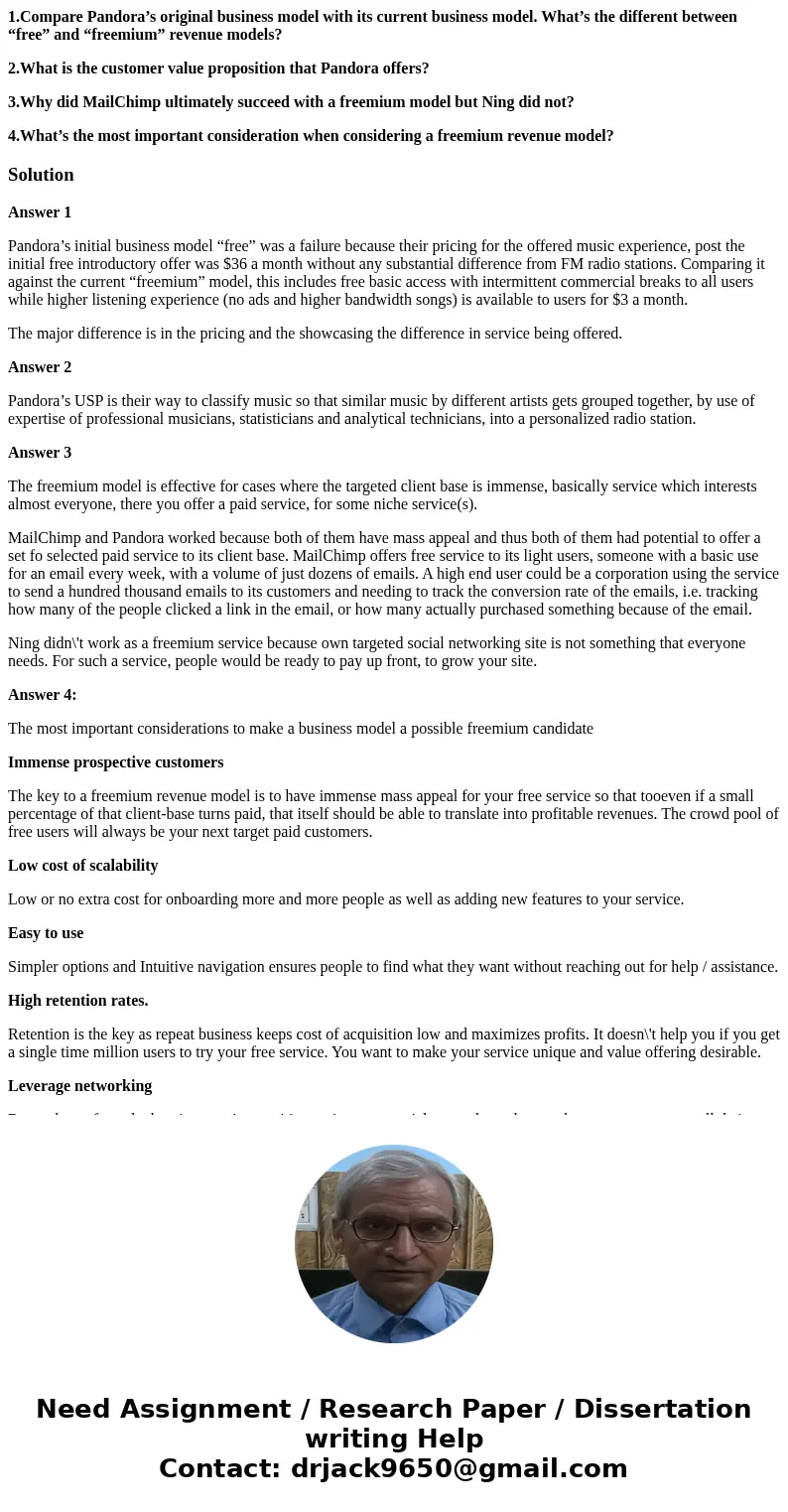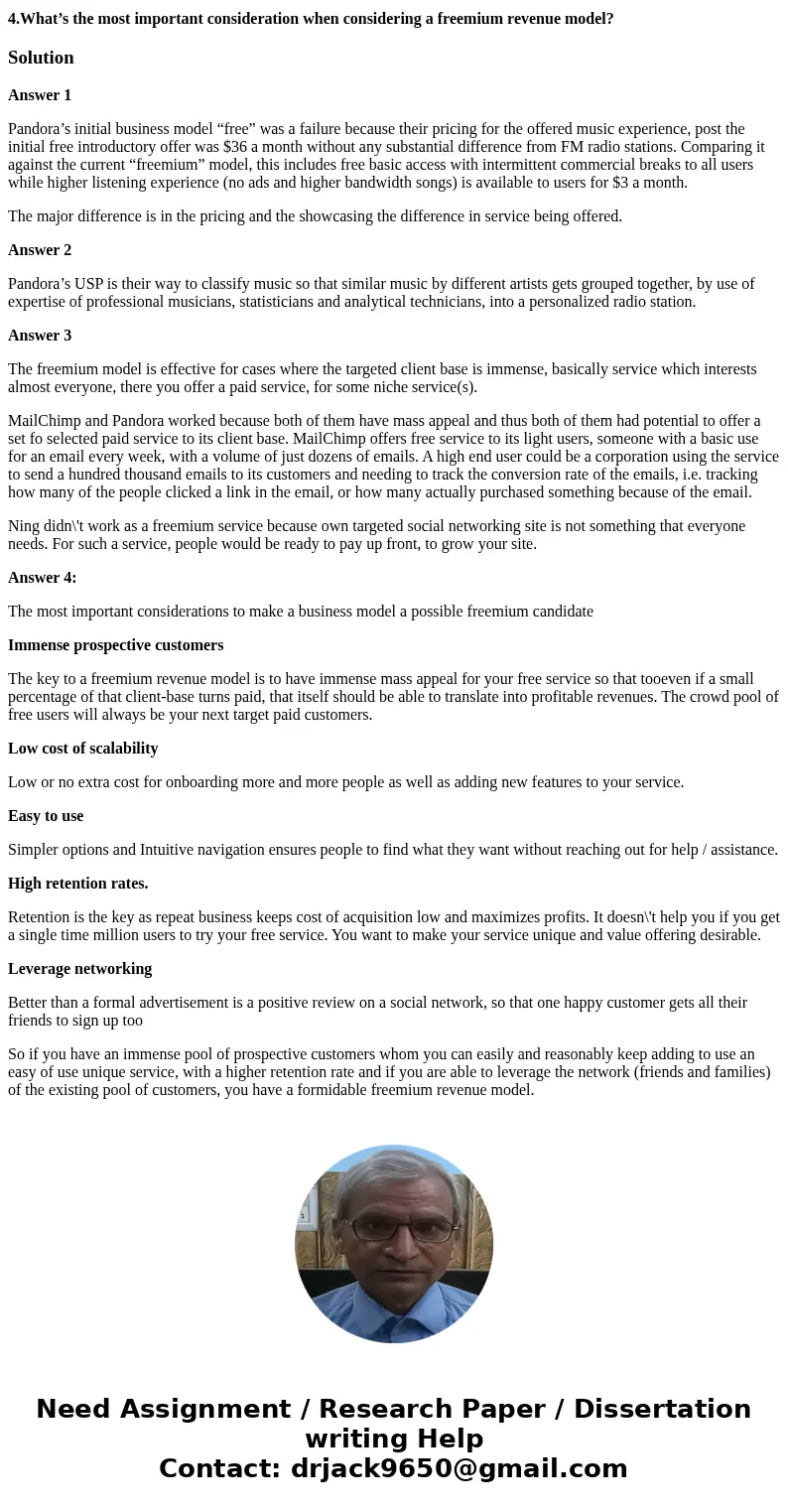1Compare Pandoras original business model with its current b
1.Compare Pandora’s original business model with its current business model. What’s the different between “free” and “freemium” revenue models?
2.What is the customer value proposition that Pandora offers?
3.Why did MailChimp ultimately succeed with a freemium model but Ning did not?
4.What’s the most important consideration when considering a freemium revenue model?
Solution
Answer 1
Pandora’s initial business model “free” was a failure because their pricing for the offered music experience, post the initial free introductory offer was $36 a month without any substantial difference from FM radio stations. Comparing it against the current “freemium” model, this includes free basic access with intermittent commercial breaks to all users while higher listening experience (no ads and higher bandwidth songs) is available to users for $3 a month.
The major difference is in the pricing and the showcasing the difference in service being offered.
Answer 2
Pandora’s USP is their way to classify music so that similar music by different artists gets grouped together, by use of expertise of professional musicians, statisticians and analytical technicians, into a personalized radio station.
Answer 3
The freemium model is effective for cases where the targeted client base is immense, basically service which interests almost everyone, there you offer a paid service, for some niche service(s).
MailChimp and Pandora worked because both of them have mass appeal and thus both of them had potential to offer a set fo selected paid service to its client base. MailChimp offers free service to its light users, someone with a basic use for an email every week, with a volume of just dozens of emails. A high end user could be a corporation using the service to send a hundred thousand emails to its customers and needing to track the conversion rate of the emails, i.e. tracking how many of the people clicked a link in the email, or how many actually purchased something because of the email.
Ning didn\'t work as a freemium service because own targeted social networking site is not something that everyone needs. For such a service, people would be ready to pay up front, to grow your site.
Answer 4:
The most important considerations to make a business model a possible freemium candidate
Immense prospective customers
The key to a freemium revenue model is to have immense mass appeal for your free service so that tooeven if a small percentage of that client-base turns paid, that itself should be able to translate into profitable revenues. The crowd pool of free users will always be your next target paid customers.
Low cost of scalability
Low or no extra cost for onboarding more and more people as well as adding new features to your service.
Easy to use
Simpler options and Intuitive navigation ensures people to find what they want without reaching out for help / assistance.
High retention rates.
Retention is the key as repeat business keeps cost of acquisition low and maximizes profits. It doesn\'t help you if you get a single time million users to try your free service. You want to make your service unique and value offering desirable.
Leverage networking
Better than a formal advertisement is a positive review on a social network, so that one happy customer gets all their friends to sign up too
So if you have an immense pool of prospective customers whom you can easily and reasonably keep adding to use an easy of use unique service, with a higher retention rate and if you are able to leverage the network (friends and families) of the existing pool of customers, you have a formidable freemium revenue model.


 Homework Sourse
Homework Sourse